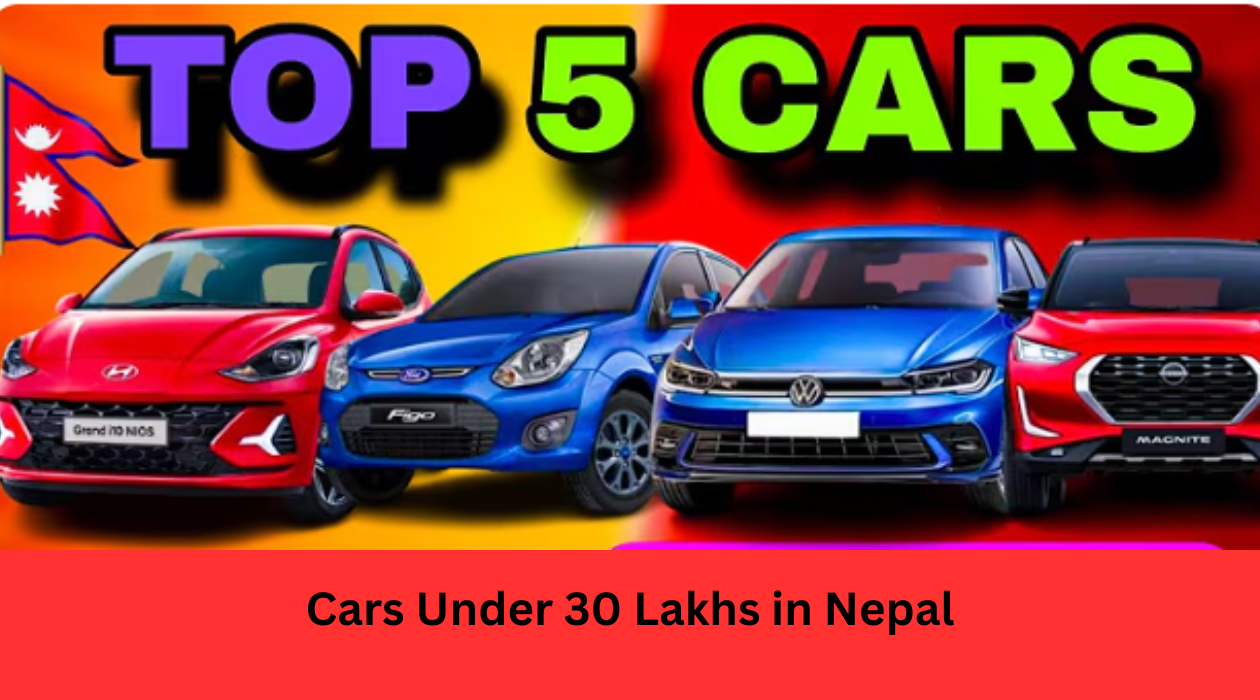With a budget of Rs. 30 Lakhs, buyers can find reliable, feature-packed vehicles suited to the country’s diverse roads—from Kathmandu’s busy streets to rural hilly paths. As of 2025, the market offers a range of options, including petrol hatchbacks and electric vehicles (EVs), thanks to growing competition and government EV incentives. This article highlights some of the best cars under Rs. 30 Lakhs in Nepal, blending affordability with practicality for budget-conscious drivers.
Why Focus on Cars Under 30 Lakhs?
Nepal’s middle class, with an average annual income of around Rs. 4-5 Lakhs, often seeks affordable yet dependable cars. High import taxes (up to 298% on petrol cars) and rising fuel costs make budget options critical. EVs, with lower duties (25-90%) and cheaper running costs (Rs. 2-3/km vs. Rs. 10-15/km for petrol), are gaining traction, while petrol hatchbacks remain popular for their familiarity and service networks. Below, we explore top picks under this price cap.
Top Cars Under 30 Lakhs in Nepal
- Dahe DH 350 (Electric)
- Seres Mini EV (Electric)
- MG Comet EV (Electric)
- Suzuki Alto 800 (Petrol)
- Tata Tiago EV (Electric)
Comparison Table: Cars Under 30 Lakhs in Nepal
| Model | Price (Rs.) | Type | Range/Mileage | Power | Ground Clearance |
|---|---|---|---|---|---|
| Dahe DH 350 | 13.90 Lakhs | Electric | 100-120 km | 10 kW (30 kW peak) | 150 mm |
| Seres Mini EV | 13.99 – 17.99 Lakhs | Electric | 180-220 km | 25 kW | 140 mm |
| MG Comet EV | 17.99 – 20.99 Lakhs | Electric | 230 km | 31.26 kW | 165 mm |
| Suzuki Alto 800 | 22.09 – 23.09 Lakhs | Petrol | 24.7 kmpl | 48 PS | 160 mm |
| Tata Tiago EV | 21.99 – 27.99 Lakhs | Electric | 250-315 km | 45-49 kW | 166 mm |
1. Dahe DH 350 (Electric)
- Price: Rs. 13.90 Lakhs
- Details: Nepal’s cheapest EV, introduced by Future Green Energy Pvt. Ltd., the Dahe DH 350 is a compact hatchback ideal for city use. Its 10 kW motor (peak 30 kW) hits 65 km/h, with a 100-120 km range from a lead-acid battery.
- Why It Fits: At Rs. 2.98 Lakhs down payment and no road tax, it’s a steal for urban commuters, charging overnight in 8-10 hours.
2. Seres Mini EV (Electric)
- Price: Rs. 13.99 Lakhs – Rs. 17.99 Lakhs
- Details: Launched in 2023 at the NADA Auto Show, this Chinese EV comes in three variants. The base model (13.8 kWh battery) offers 180 km range, while the top variant (16.8 kWh) reaches 220 km, powered by a 25 kW motor.
- Why It Fits: Its small size and low cost make it perfect for Nepal’s crowded cities, with IP67-rated batteries for durability.
3. MG Comet EV (Electric)
- Price: Rs. 17.99 Lakhs – Rs. 20.99 Lakhs
- Details: MG Motor’s quirky mini EV offers Eco, Normal, and Sport modes. A 31.26 kW motor with 110 Nm torque delivers a 230 km range, charging in 7 hours (AC).
- Why It Fits: Affordable and stylish, it’s built for city driving with easy parking and low maintenance.
4. Suzuki Alto 800 (Petrol)
- Price: Rs. 22.09 Lakhs – Rs. 23.09 Lakhs
- Details: Nepal’s cheapest petrol car, the Alto 800 features a 796 cc engine (48 PS, 69 Nm), delivering 24.7 kmpl. Its 160 mm ground clearance suits modest terrains.
- Why It Fits: Widely available parts and a vast service network from CG Motors make it a practical choice under Rs. 25 Lakhs.
5. Tata Tiago EV (Electric)
- Price: Rs. 21.99 Lakhs – Rs. 27.99 Lakhs
- Details: Tata’s budget EV offers a 19.2 kWh (250 km) or 24 kWh (315 km) battery, with 45-49 kW power. It includes an 8-year battery warranty and fast charging (80% in 60 minutes).
- Why It Fits: A longer range and modern features like a 7-inch touchscreen make it versatile for city and short highway trips.
Why These Cars Stand Out
- Affordability: All fit within Rs. 30 Lakhs, with EVs offering lower long-term costs.
- Practicality: Compact sizes and decent ground clearance suit Nepal’s urban and semi-rural roads.
- Support: Brands like Suzuki and Tata have widespread service centers; EV makers like Thee Go and MG are expanding fast.
Conclusion
Cars under Rs. 30 Lakhs in Nepal—like the Dahe DH 350, Seres Mini EV, MG Comet EV, Suzuki Alto 800, and Tata Tiago EV—cater to a range of needs in 2025. EVs dominate the lower end with tax breaks and cheap charging, while petrol options like the Alto hold strong for traditional buyers. Whether you prioritize cost, eco-friendliness, or reliability, these vehicles prove you don’t need a fortune to drive well in Nepal.
